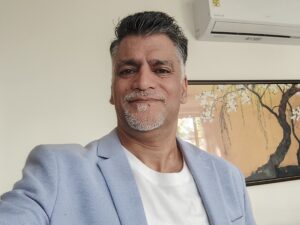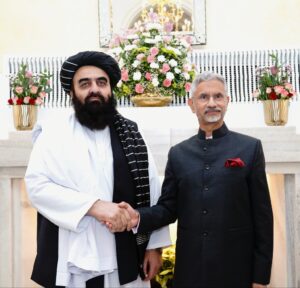When Autumn Trees Still Wait for Spring: The Silent Longing of Old Age Parents.
By Tyima Bilal
The Poetry of Autumn: A Metaphor for Ageing Hearts:
There is a quiet, melancholic poetry in the way autumn trees stand, weathered, thinning, yet unshakably dignified. Their branches droop with age, their leaves fall one by one, yet beneath their fading beauty lies a heart that still hopes, still waits, still believes that spring will return. Old age parents resemble these autumn trees in the most heartbreaking way. They have spent the prime years of their youth standing tall, providing shade, comfort, nourishment, and protection to their children. They held our tiny fingers when we learned to walk, they sacrificed their meals so we never slept hungry, they soothed our fears in the darkness, and they worked relentlessly to give us a life better than the one they lived. Their days were filled with responsibility and their nights with dreams for us, not for themselves. But when age steals their strength and their world grows quieter, their children, once the center of their universe, grow absorbed in their own lives, leaving behind memories stronger than presence. The irony of life is that parents raise children to be independent, yet independence is what distances children from them. And this distance is not measured in miles; it is measured in silence.
The Quiet Cry That Should Have Shaken the World:
Just a few days ago, I witnessed something that tore through me in a way I cannot fully describe. An old uncle, someone’s father, someone’s entire universe once, sat under the shade of a fading tree. His fragile body seemed to sink into the chair, not from age alone, but from the weight of longing that had settled in his bones. His eyes, which had probably once sparkled with pride when his children achieved something, were now filled with a kind of sorrow that was too deep to explain. When he began to cry, it was not the loud, dramatic weeping that drew attention. It was the silent crying of old people, the quiet tears that fall slowly because even their sorrow has grown tired. His voice cracked, trembling as he whispered, “I gave my children everything. Today I only want a few minutes of their time, but even that has become too much to ask for.” In that moment, his tears were not just water; they were decades of sleepless nights, uncounted sacrifices, hidden struggles, and love that had been returned with distance. The heartbreak of his loneliness felt like watching an ancient tree crack from within, something sacred breaking silently.
Loneliness: The Illness No Doctor Diagnoses:
Loneliness at old age is perhaps the most painful illness, one that no medical report can diagnose and no medicine can treat. It creeps quietly, disguised as silence. It begins with children becoming busy, then distant, then unavailable, and eventually emotionally disconnected. In the beginning, parents understand. They believe their children are occupied, they tell themselves the calls will come later, the visits will happen soon, things will get better. But time does not heal this wound; it deepens it. Every morning, old parents look at the door with hope, and every night they sleep with disappointment folded inside their sighs. They cook meals for two even when they live alone. They keep the home tidy as if expecting someone to walk in. They sit by the window pretending to enjoy fresh air, but in reality, their eyes are fixed on the road, searching for familiar footsteps. They keep the lights on longer than needed not because they fear the dark, but because they fear being forgotten. Their hearts turn into quiet museum rooms, filled with memories but empty of visitors.
The Unspoken Ache Behind Every “I’m Fine”
Parents rarely express the depth of their loneliness. They don’t say, “I miss you,” even when their hearts ache with every passing day. Instead, they swallow their pain, hide it behind tired smiles when their children call for two minutes, and act strong even when their hands tremble with age. When asked how they are, they always say, “I’m fine”, a phrase that hides an entire universe of longing. Behind every “I’m fine,” there is a silent plea: “Stay with me for a while.” Old age parents do not measure love in money or gifts. They measure it in minutes, in conversations, in the warmth of presence. What they crave most is a simple moment of companionship, someone to sit beside them, someone to listen, someone to remind them they are still valued, still wanted, still loved. These are the same parents who once walked barefoot to save money for our shoes, who skipped their dreams so we could fulfill ours, who stayed awake when we were sick, who aged early so we could grow freely. Their love holds no conditions, their devotion has no limits.
The House That Slowly Empties of Laughter:
A home where parents wait alone carries a different kind of silence, one that feels heavy, one that echoes. The walls remember the footsteps of children, the kitchen remembers the laughter, the rooms remember late-night conversations. But the present remains quiet. Parents keep utensils in pairs even when they eat alone, as if the second plate will encourage a miracle. They keep old photographs clean, touching them gently like fragile memories. They talk to themselves sometimes, because silence becomes unbearable. They replay old moments in their minds, birthdays, school days, weddings, because memory becomes the only companion. A house that once overflowed with the chaos of children becomes a place where only the clock speaks. And that ticking sound becomes a cruel reminder of days slipping away unnoticed.
The Regret That Arrives Too Late:
There comes a time when the words we spoke in frustration and the disrespect we showed without thinking return to us like echoes we cannot silence. At that moment, we realize how deeply it must have hurt the very hearts that never wished us anything but goodness. Parents absorb our harshness quietly, but regret does not stay quiet, it grows heavier with time. Nothing hurts more than remembering the times we raised our voice at those who once spoke to us with endless patience. And when they are no longer around to forgive us with their warm smile, the weight of that regret becomes lifelong. The truth is, no apology is ever too late. Respect them now, before time turns your regret into something you can never undo.The saddest truth of life is that children often realize the value of their parents only when it’s too late, when the house becomes permanently silent, when the bed remains undisturbed, when their favourite shawl lies neatly folded forever. When the familiar voice becomes a memory, not a sound. When their empty chair becomes the loudest thing in the room. Regret blooms too late. We remember their sacrifices only after their hands no longer reach out for us. We search for their blessings after their lips can no longer whisper prayers for us. We look at their photos and feel a hollow ache, wishing for a single moment more. A single conversation. A single hug. A single chance to say “I’m here.”
A Plea from Their Hearts: Be Their Spring:
Old age parents are not burdens; they are blessings whose time is limited. Their autumn is gentle but short. Their winter arrives quietly. And once they leave this world, no one, not even the closest friend or partner, can fill the emptiness their absence creates. If you still have your parents, you have something priceless. Visit them more often. Call them without waiting for a reason. Sit beside them without rushing. Let them tell old stories even if you’ve heard them countless times. Let them feel seen, heard, and cherished. Hold their hands, those hands that once held your entire world together. Tell them you love them now, not later. Show them the spring of your presence while they are still here to feel it. Because parents are autumn trees that waited their whole lives for us, and now they wait in their final season with hope that we will return.
The Final Truth: They Loved Us Through Every Season:
They loved us when we were weak, when we were learning, when we were lost, when we were difficult, when we were ungrateful. And now, in their season of fragility, they deserve the same love returned. Not through money, not through gifts, but through time, presence, tenderness.Call them without waiting for an occasion. Sit beside them without rushing. Hold their hands even if you don’t know what to say. Let them talk about old stories even if you’ve heard them a hundred times. Let them feel heard, seen, and loved. Before time steals them silently, give them the spring of your presence, because they have spent their entire lives being your shelter. They are autumn trees waiting for a spring that only you can bring. And one day, when life makes you stand in their place, you will understand the depth of the love they carried and the ache of the wait they endured. Give them love now, while their hearts still beat with hope, while their hands still reach out for yours, while they still wait by the door believing that you will return soon. Because nothing is more painful than realizing you were their entire world, and they spent their final years feeling forgotten. And nothing is more beautiful than giving your parents the dignity, warmth, and companionship they so deeply deserve. They are not just parents, they are stories, they are prayers, they are living blessings. They loved you through every season. Now it is your turn to be their spring.
Penned by Tyima Bilal
A wanderer of fading memories, writing with ink dipped in the quiet tears of forgotten parents, and a heart that prays for love to return before the last autumn leaf falls.
 How Kashmir’s Forests Fell to Greed and Silence.
How Kashmir’s Forests Fell to Greed and Silence. and Logic
and Logic
 Junk Food Leads to Obesity and Lifestyle Diseases.
Junk Food Leads to Obesity and Lifestyle Diseases.